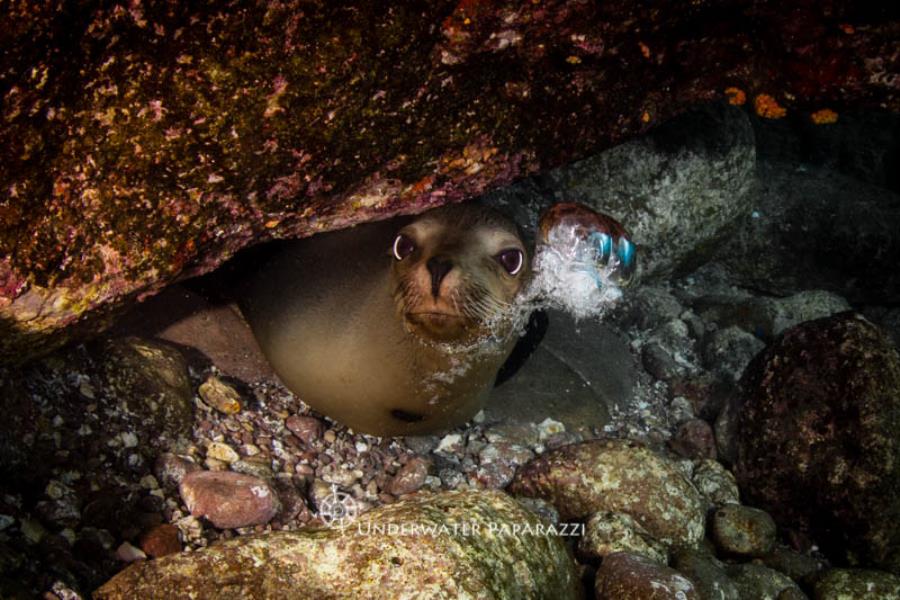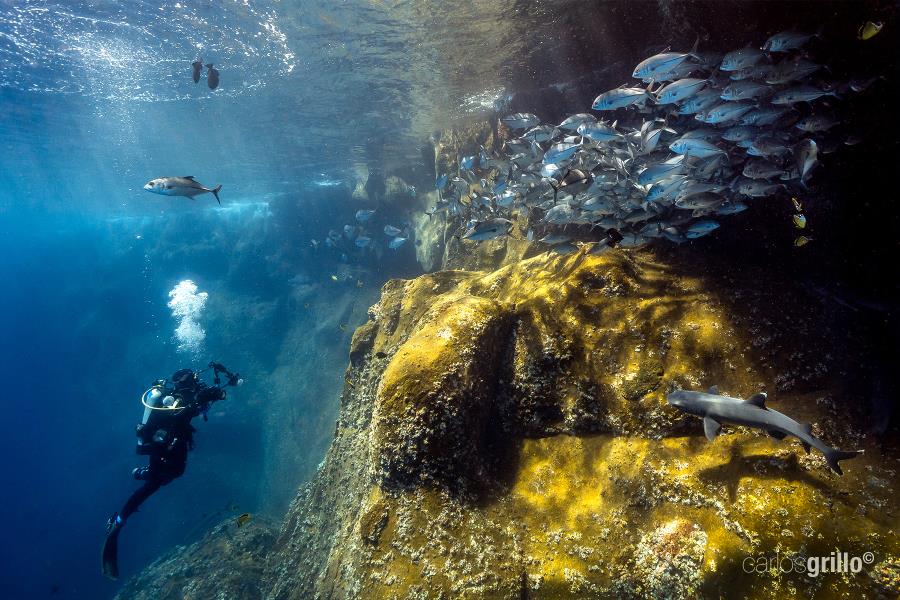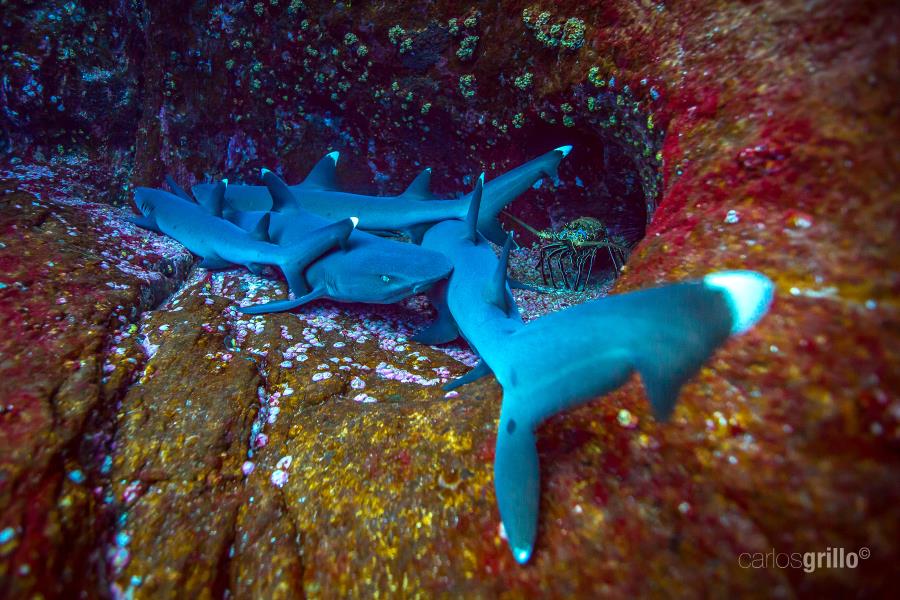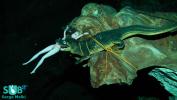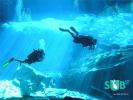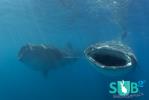 Advice on Scuba Diving in Baja Peninsula, Mexico
Advice on Scuba Diving in Baja Peninsula, Mexico
Part 1: Overview of Scuba Diving in Baja Peninsula, (Mexico)
Jutting out into the remote waters of the Pacific Ocean, at the tip of Mexico's Baja Peninsula is the town of Cabo San Lucas. Marking the furthest extreme south on the peninsula, Cabo is a great place for a scuba diving adventure, snorkeling or fiesta. Cabo isn’t the only place to dive on the Baja; another popular area is off La Paz on the Sea of Cortez side of the giant Baja peninsula.
The waters off the Baja are not as clear, calm, and warm as the Caribbean side of Mexico off the Yucatan Peninsula but the Pacific Ocean offers a wild rush for those looking to explore the Baja's underwater world. Currents can be swift and surf high so shore diving is not typically an option. There are a few protected bays that line the Cabo coast that offer some reef and marine life for scuba divers but in general you have to go out a bit on a boat to get calmer, clearer waters ideal for scuba diving.
When visiting the Cabo area most people end up lounging and maybe going on a snorkeling trip or a boat tour. The committed scuba diver can find some great dive sites if they ask around at the dive shops and hold out for the right dive boat captain and company that really knows their stuff.
About a half day drive to the northeast across the desert expanse of the Baja Peninsula is the town of La Paz. The southern half of the baja makes up the Mexican state of Baja California Sur and La Paz is its capital. Situated on Bahia de La Paz, a bay on the Sea of Cortez, the town of La Paz enjoys a really nice climate and is a good place to scuba dive. The winter temperatures rarely reach below 60 degrees F and summer temperatures hardly ever reach 90 degrees F, due to the maritime wind. Whereas temperatures within the interior of the peninsula in the summer months get very hot, there are some rainy days maxing out in August and September, with a maximum monthly rainfall of about 3 inches in September. However, it’s nothing to plan or change your trip details to fit. There is decent to great weather from spring through fall for scuba diving in La Paz. Even in the winter months with a little wetsuit protection, diving in chilly Pacific and Sea of Cortez is not a problem nor unusual.
For scuba divers who want remote and exotic, consider a liveaboard trip that takes you to what many refer to as the Mexican Galapagos. Socorro and San Benedicto Islands are part of the volcanic island chain by the name of Revillagigedo. This is an adventure and getaway that is about 250 miles of the southern tip of the Baja peninsula. You can plan a trip to these islands from either Cabo or La Paz.
Part 2: Dive Sites, Marine Life & Environment in Baja Peninsula, (Mexico)
One of the best and unique places to scuba dive in the Cabo area off the tip of the Baja is Gordo Banks. Gordo Banks is a sea mountain whose tip is 110 feet beneath the water's surface and about 10 miles offshore from the mainland. An hour’s boat ride will deliver divers to Gordo Banks, where you will swim with abundant schools of amberjack, yellowfin tuna, snapper, and bushy black coral. This location is deep and sometimes has sweeping currents so the location is for experienced scuba divers. Divers will also most likely see hammerhead sharks, giant manta rays, and whale sharks at Gordo Banks depending on the season.
Closer to shore and an easy boat ride from the Cabo San Lucas marina is Chileno Bay. This is a place where people can swim out from shore to explore the fish and rocks or snorkel or dive from the boat. This is a protected little bay that offers beginner divers a protected, easy dive site. Also in the Cabo San Lucas area is the dive site called Anegada. Here explore an underwater canyon out in the San Lucas Bay. The dive site known as La Larga is also an underwater canyon at depths between 60 feet and 120 feet deep. La Larga is a great dive site worth checking out when exploring the Cabo San Lucas shore and a great dive site to see large barracuda, abundant schools of fish, and if you are lucky, the local octopus that lives in that area.
Another popular area to scuba dive is east of the Cabo area, further along the coast towards the Sea of Cortez. There you will find the small town of Cabo Pulmo and Cabo Pulmo National Marine Park. In Cabo Pulmo Park you will find the only coral reef on the western side of North America. This is a great dive site for advanced and beginners.
In La Paz, a half-day to the northeast, most scuba diving is arranged from La Paz's beach resorts. Although the shore side resorts are appealing, for serious divers, a liveaboard is the best way to go. It opens the opportunity to dive at the better-known Sea of Cortez sites, such as the El Bajo seamounts, where you will dive with manta rays and hammerheads, and Los Islotes Island that has abundant sea lions.
For a more exotic dive expedition consider planning a dive trip to the islands located in the Pacific about 250 miles south of the tip of Baja, California. Socorro and San Benedicto Islands are part of the Revillagigedo chain and offer some great scuba diving. Known as the Mexican Galapagos, a trip out to these volcanic islands offers the chance to get up close and personal with large species such as giant manta rays, schools of hammerheads, whale sharks, bottle nose dolphins, tiger sharks and enormous schools of tuna.
Part 3: Dive Shops, Airports & Logistics of Diving in Baja Peninsula, (Mexico)
Flying into the Baja is painless. To get to Cabo there are many reasonably priced, direct flights from Los Angeles International (LAX) out of California, if traveling from the United States. If traveling within Mexico, there are direct flights from Mexico City's Internacional Benito Juarez (MEX) to Cabo and La Paz. To get to the Cabo area, fly into Los Cabos Mexico International Airport (SJD) and to get to La Paz fly into Manuel Márquez de León International Airport (LAP) when heading to the southern realms of the Sea of Cortez.
When in La Paz, the capital of Baja California Sur, ferry over the Sea of Cortez to the mainland of Mexico from the port of Pichilingue. The ferries will transport you to and from Mazatlán or Topolobampo, a small town near Los Mochis.
Choosing to stay and plan your scuba diving adventures from La Paz is bound to give you a more authentic Mexican experience than staying in the busy, touristy areas around Cabo San Lucas. La Paz offers a lot of different scuba diving shops to make plans with. The Cortez Club is a diving and water sports center that offers reliable dive trips in and around La Paz, as well as great scuba instruction for beginners and experts. Another great and established resort that offers scuba instruction and day trips is Club Cantamar; they have been scuba diving and instructing since 1965!
There is an atmosphere of fiesta and lounging in Cabo but there is also an interest in scuba diving. Cabo's oldest and best dive shop is Amigos Del Mar, which coordinates the scuba diving activities at many of the major resorts in Cabo. Regardless of where you are staying you can arrange a scuba trip with Amigos Del Mar. Manta Scuba Diving and Cabo Eagle Divers are two other scuba dive shops that bring divers out to explore the waters around the tip of the Baja Peninsula.
As you travel along the coast of Cabo eastward along the Sea of Cortez, you will eventually get to the town and park known as Cabo Pulmo. Cabo Pulmo Beach Resort is a great dive shop to arrange to dive on Cabo Pulmo, where you will experience North America's only coral reef on the continents western side. Arrange a dive from this quiet little Mexican town and get away from the fiesta crowds around the Cabo San Lucas area.
---- Book Your Diving ----
Fill in the Form Below.
Our hand picked regional partners will deliver no obligation quotes.
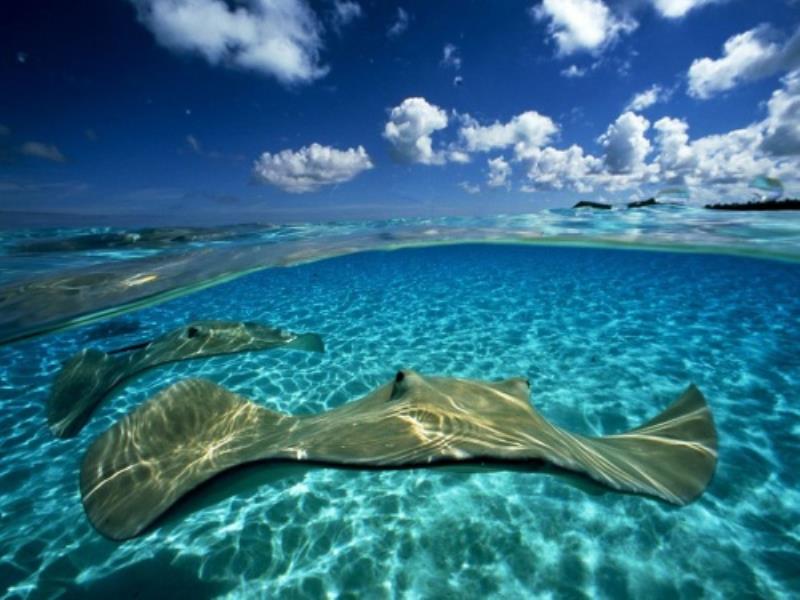
Tweets by @DiveAdvisorApp


